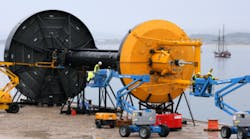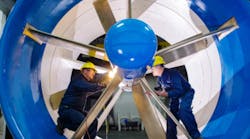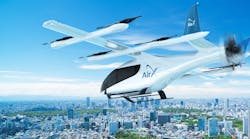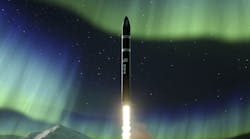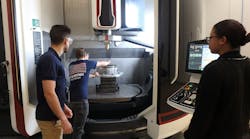Lockheed Martin has joined a partnership to develop what it described as “the world’s largest wave energy project” to date, off the Victoria coast in southern Australia. Victorian Wave Partners Ltd. is an Australian special-purpose company owned by Ocean Power Technologies Australasia Pty Ltd., a developer of “wave energy” technology.
OPT’s PowerBuoy system uses a "smart" buoy to convert wave energy into electricity. The buoy moves up and down with the rising and falling of waves, and the mechanical energy generated by this action drives an electrical generator, which transmits power to shore via an underwater cable.
The system is designed to be electrically tuned on a wave-by-wave basis to maximize the amount of electricity produced. In the Australian development, anticipated peak-power generating capacity is 62.5 megawatts. That would be sufficient to supply 10,000 homes.
The Victorian Wave project is scheduled to be built in three stages, with the first stage producing approximately 2.5 megawatts of peak power.
No starting date has been indicated for the installation.
Lockheed did not reveal the value of its investment. It will provide overall project management, assist with the design for manufacturing the PowerBuoy systems, lead the production of selected components, and perform system integration of the wave energy converters.
"We are pleased to be working with Lockheed Martin in connection with this exciting project in Australia," explained OPT chief executive Charles F. Dunleavy. "Development of this project draws on core strengths of both our companies and represents an important undertaking for commercialization of the PowerBuoy technology."
Lockheed Martin’s participation in this project is reminiscent of Boeing’s recent participation in a tidal-energy project, though wave power is distinct from tidal power.
Wave power devices extract energy from the surface motion of ocean waves, which is very predictable and reportedly will generate electricity for more hours in a year than wind and solar sources.
"We are applying our design and system integration expertise to commercialize promising, emerging alternative energy technologies, including ocean power," stated Tim Fuhr, director of ocean energy for Lockheed Martin's Mission Systems and Training business. "This project extends our established relationship with OPT and Australian industry, and enables us to demonstrate a clean, efficient energy source for Australia and the world."
